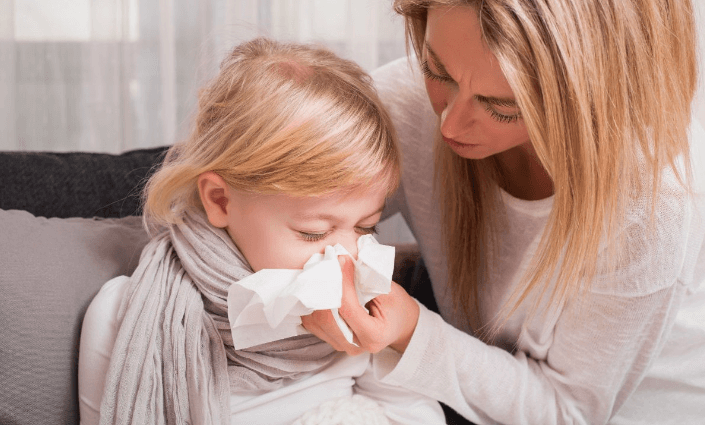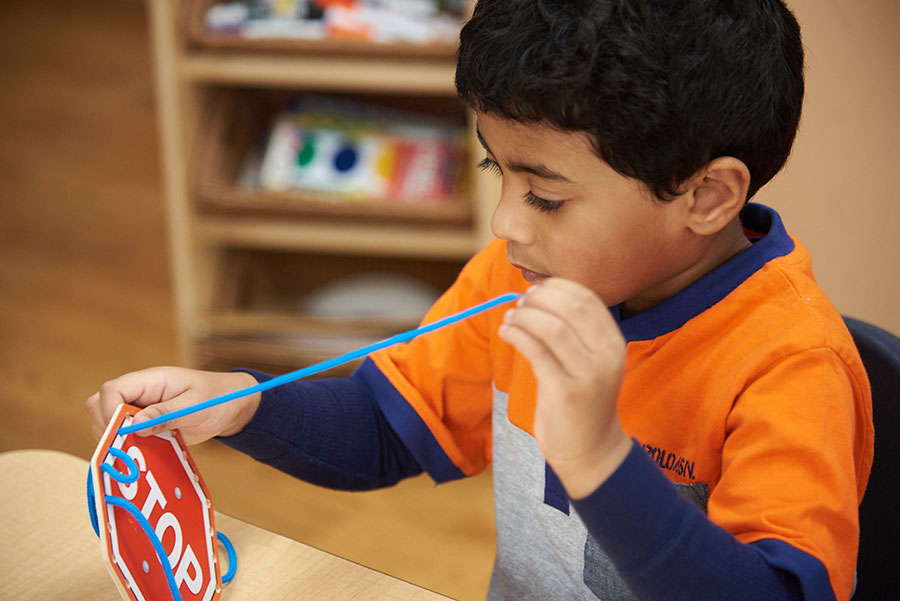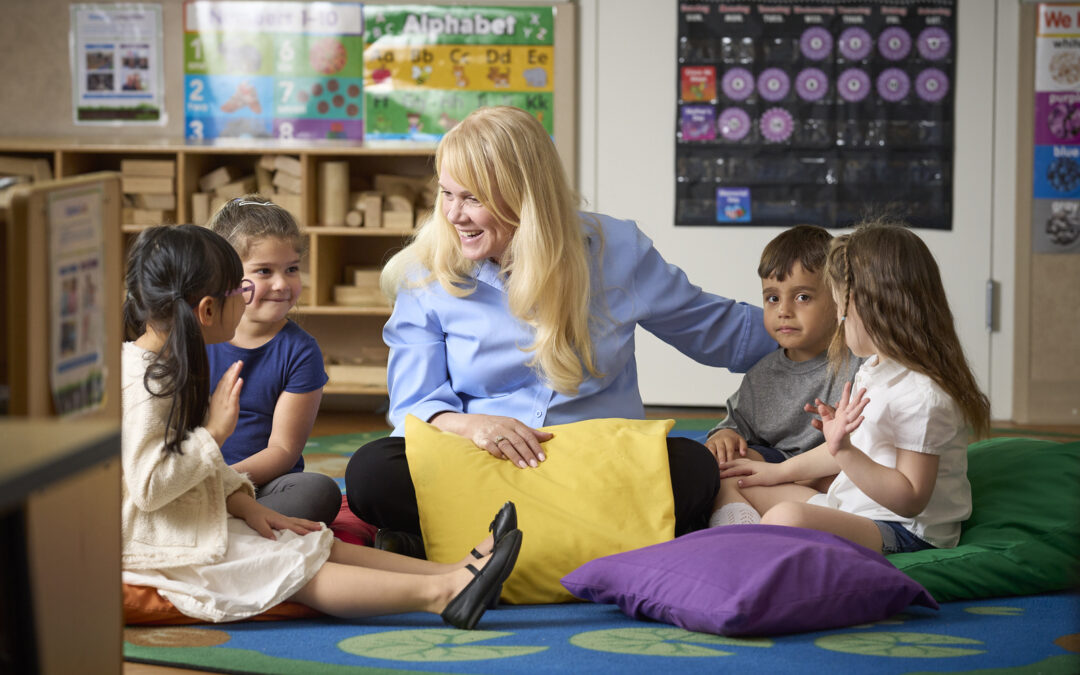Today is the most important meeting of your career, or a least it feels like it. Associates contacted, meeting room arranged, presentation complete, and guess what? Your preschooler wakes up with the sniffles and a slight fever. So what do you do? Give her some juice, stuff some extra tissues in their pocket and take them to school hoping that dose of pain reliever/fever reducer medication doesn’t wear off before your meeting’s over. It might sound cruel, and it certainly brings on the guilt, but most of us have taken our children to school when they were a bit under the weather. And it’s no wonder! According to the National Institute of Allergy and Infectious Diseases (March 2001), the common cold is the leading cause of doctor visits and school and work absenteeism. The common cold is also the most frequent illness among young children.
In the United States, most colds occur during the fall and winter. Beginning in late August or early September, the incidence of colds increases slowly for a few weeks and remains high until March or April, when it declines. Colds spread more in colder weather when people spend more time inside and children spend more time together in school and child care.
When we enroll our children in preschool and child care it often seems like they are getting sick more often than their stay-at-home counterparts. And they might be since colds spread more when children are clustered together inside. On average, kids in group care during the first three years of their lives get about twice as many colds as their peers during those years. But here’s the good news. Each time a child fights off a cold, they develop immunity to that virus, reports the February 2002 issue of the Archives of Pediatrics and Adolescent Medicine.
By 6 to 11 years of age, the children who had been enrolled in large day care centers were reportedly 60% to 70% less likely to have frequent colds than their at-home peers. In other words, child care kids are spared through the elementary school years when being home sick might make a bigger difference. The Archives of Pediatrics and Adolescent Medicine adds, It is hard to see our children suffer through common childhood maladies, such as the common cold, but this is an inevitable part of the development of their immune systems. Whether they acquire that immunity during preschool or elementary, it will be acquired on their way to a healthier future.”
Although there is no cure for the common cold, there are several things we can do to reduce the spread of colds. Here are 10 tips that may help prevent the spread of colds for your and your family this cold season. This list was created by the National Network for Child Care adapted from Rice and Pollard’s book, Colds, Flu, and Other Respiratory Infections, 2001.
- Wash hands. Washing hands literally rinses germs away. Be sure to use soap and warm, running water to best wash germs off the hands. Teach children to say their ABCs while washing so they keep their hands under the faucet long enough.
- Don’t share cups. Using paper cups can be helpful to avoid spreading germs. Having a dispenser of small cups in key areas (e.g., kitchen, bathroom) can help children to make it a habit.
- Use paper tissue. It is best to blow the nose on paper tissue and throw it away. It is important to keep the nose gently blown to rid the body of mucous; however, throwing the tissue away immediately is also important because it is a source of cold virus that can be spread by leaving it on a counter, desk, couch, chair, etc.
- Don’t touch eyes, nose, or mouth. If exposed to someone with a cold, don’t touch your eyes, nose, or mouth, which is where germs can be passed. Try to help children to understand how germs can be spread in this way. Encourage children to wash their hands frequently.
- Use disposable towels. In the kitchen and other areas, it is best to use paper or other disposable towels instead of cloth towels. Both bacteria and viruses can live on cloth towels for hours.
- Keep toys clean. Toys often carry germs. Regularly wash children’s toys in warm, soapy water to kill bacteria and viruses.
- Sneeze away. That is, sneeze away from others and into a tissue that can be thrown away. If you have to cover your mouth with your hands, be sure to wash your hands afterward. Model these behaviors for children.
- Ventilate. Open windows when the weather permits because germs may remain stagnant in air. Also, keep the air moist to avoid nose irritation. Use a humidifier.
- Wipe up germs. Germs may rest on surfaces (up to three hours) that are touched a lot, such as door knobs, handrails, light switches, telephones, remote controls, and counter tops. Use a disinfectant as often as possible to wipe them clean.
- Don’t smoke or allow smoking. Smoking can irritate the nose and lungs and drastically increase children’s susceptibility to colds. It’s best to make your environment a smoke-free one.
Even though we parents of preschoolers are often frustrated by our children’s frequency of colds and the lack of an effective treatment for the common cold, we should take heart in knowing that our children are developing immunity which will protect them against similar illnesses in the future. That’s sometimes little comfort when a sick child requires our attention and the demands of work are still calling.






